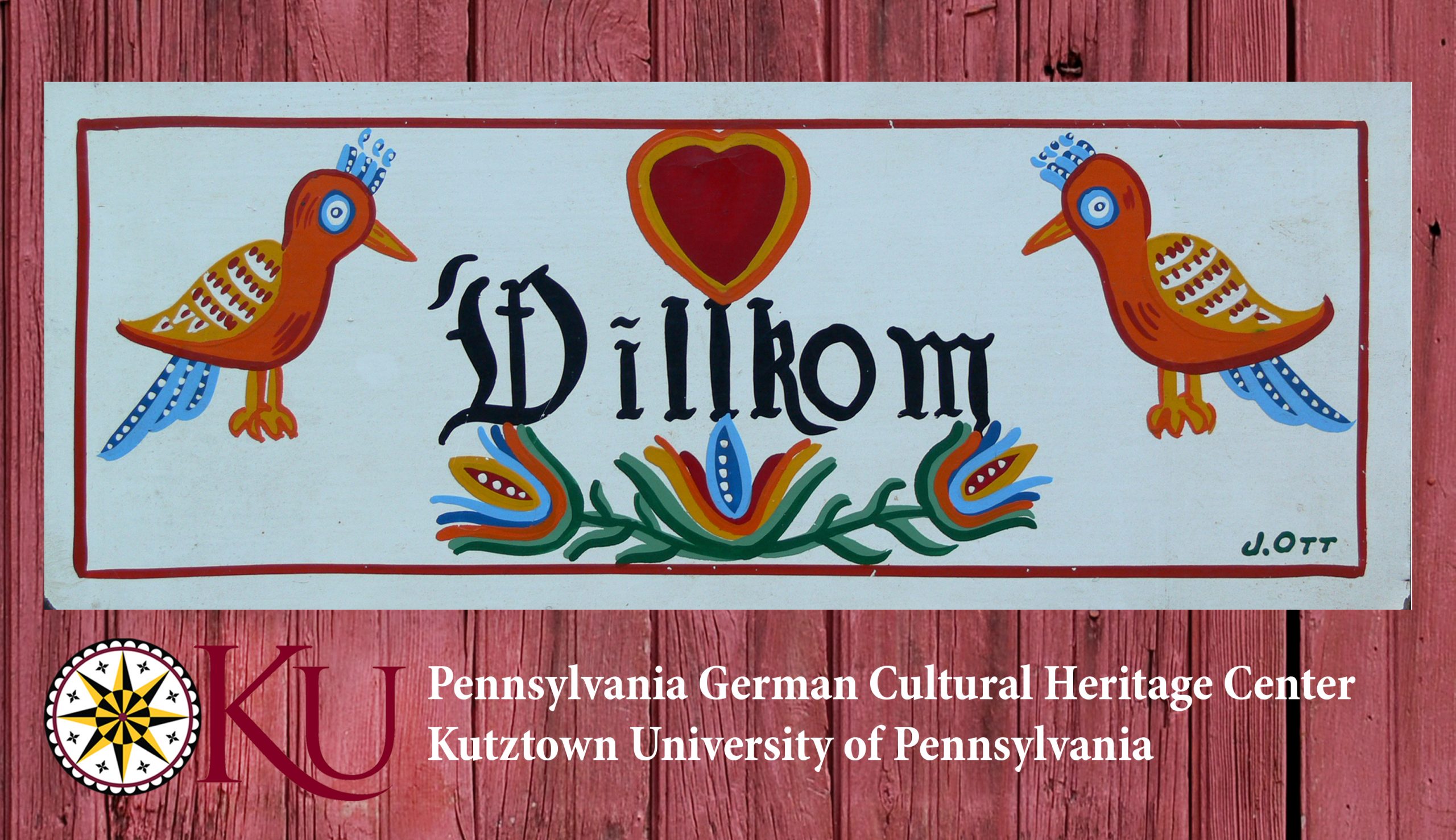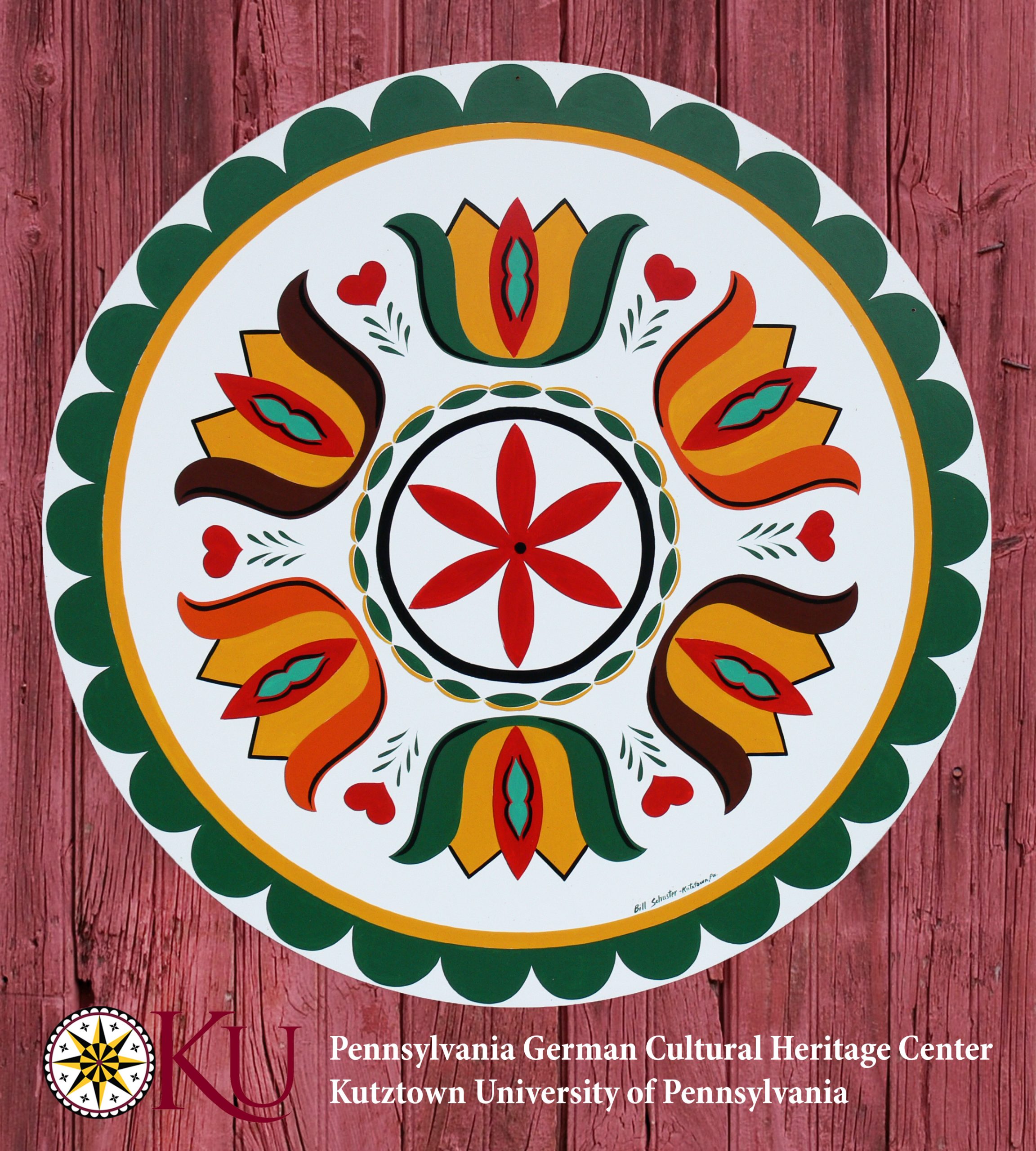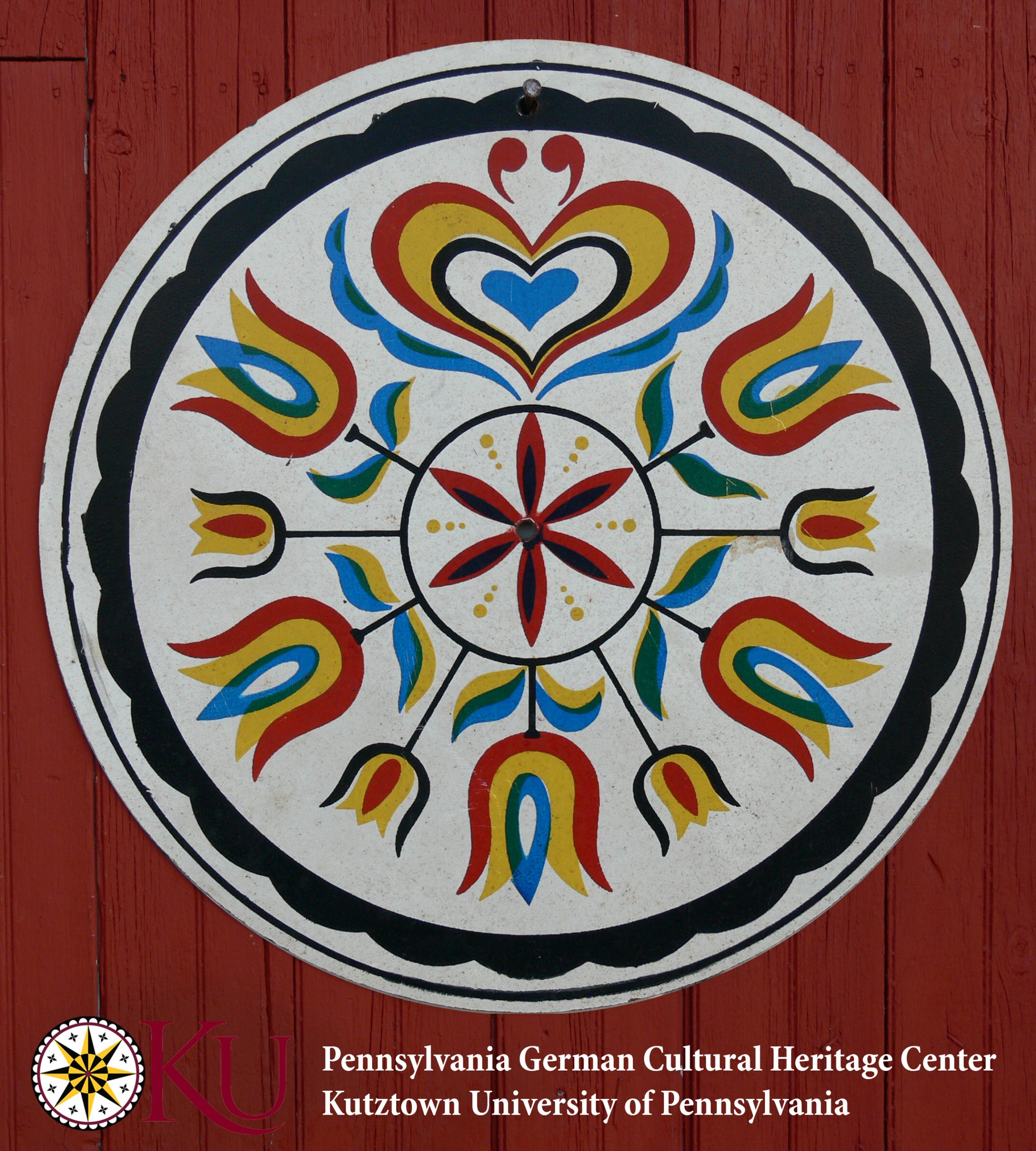
In the mid-20th century, the Pennsylvania Dutch culture experienced a revitalization of the folk culture, arts, and vernacular language. Cultural celebrations, such as the Kutztown Folk Festival, provided new opportunities for local people to promote their culture to international audiences of visitors and tourists, and folk artists were among those in the forefront of these efforts. At the same time, the decorated barns of the region were focal points in the cultural landscape which drew national attention. Romanticized and exaggerated accounts in travel literature suggested erroneously that the barn star decorations were intended to protect farms from supernatural forces.
Local folk artists, many of whom never painted on barns, began to embrace a playful and contemporary view of geometric motifs used in traditional barn decoration, blending such designs with other organic and curvilinear patterns, and embracing the mythology of the hex sign.
To discover more of the history and development of the modern hex sign, here is a presentation Barn Stars and Hex Signs of Southeastern Pennsylvania.
To learn more about the impact of the Kutztown Folk Festival on the 20th century development of hex sign art and its relation to traditional barn star painting, watch the presentation: Painter of the Stars: The Life and Work of Milton J. Hill (1887-1972).
Or, visit the studio of the prolific barn star and hex sign painter Eric Claypoole of Lenhartsville.













